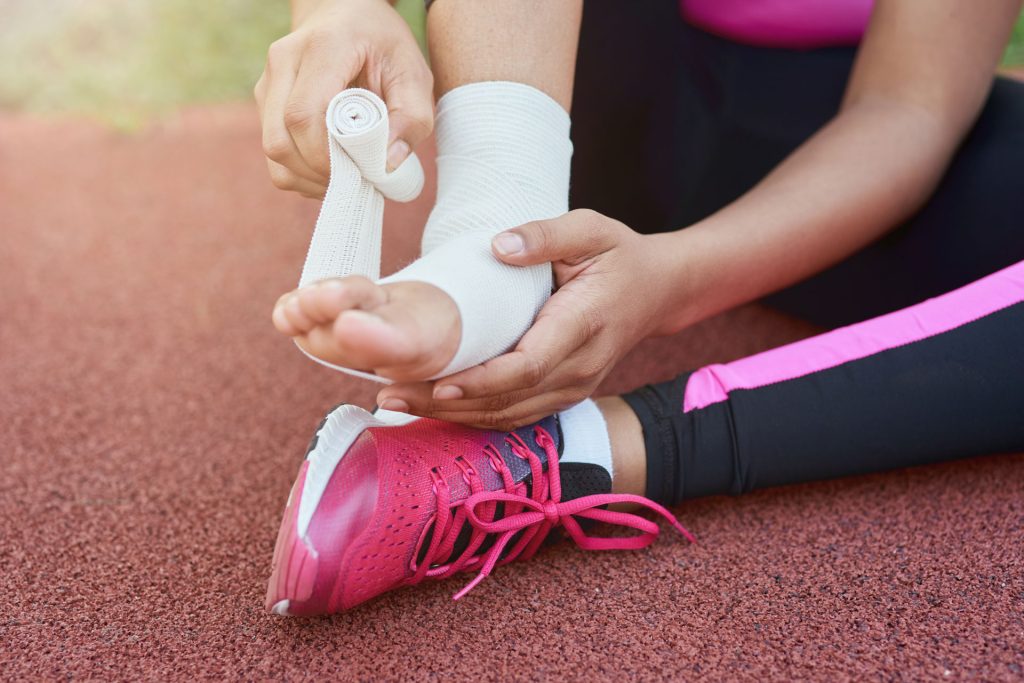For athletes and sports enthusiasts, recovering quickly and fully from injuries is essential to maintaining peak performance and staying in the game. Whether you’re a weekend warrior or a professional competitor, injury downtime can significantly impact your training schedule and overall physical condition. One advanced treatment method gaining traction in the sports medicine world is Shockwave Therapy. Known for its non-invasive approach and promising recovery outcomes, Shockwave Therapy is being increasingly utilized to treat a wide range of sports-related injuries.
Shockwave Therapy involves the use of acoustic waves that stimulate healing and regeneration in injured tissues. This innovative technique is designed to reduce pain, improve mobility, and speed up the recovery process without the need for surgery or long-term medication. For sports people looking for reliable and efficient recovery options, understanding how Shockwave Therapy works, what it treats, and its benefits is key to making informed health decisions.
How Shockwave Therapy Works in Treating Sports Injuries
Shockwave Therapy is a cutting-edge treatment method that uses focused acoustic waves to target damaged tissues deep within the body. These waves carry high energy to areas of chronic pain and injury, stimulating the body’s natural healing processes. This technology is particularly effective for injuries where soft tissue and connective structures like tendons and ligaments are affected—common problem areas for sports people.
The therapy works by creating micro-trauma in the affected area, which increases blood circulation and triggers a healing response. This encourages the regeneration of tissues, reduction in inflammation, and breakdown of scar tissue or calcifications. Over a series of treatments, athletes often experience pain relief, improved mobility, and accelerated recovery.
Shockwave Therapy is typically administered using a handheld device that delivers focused pulses to the injured site. Sessions are short, often lasting less than 30 minutes, and do not require anesthesia. The non-invasive nature of this therapy means there’s minimal recovery time, allowing athletes to return to training faster compared to surgical or more intensive procedures. For sports people constantly pushing their physical limits, Shockwave Therapy offers a powerful solution to stay active and competitive.
Related: SoftWave Therapy: A Game-Changer for Chronic Pain Sufferers
Common Sports Injuries Treated with Shockwave Therapy

Shockwave Therapy has proven highly effective in treating a variety of sports injuries that commonly result from overuse, strain, or direct trauma. Athletes often experience persistent discomfort from injuries that don’t fully heal with rest or conventional treatments. This is where Shockwave Therapy provides a reliable alternative.
Some of the most frequently treated injuries include plantar fasciitis, Achilles tendinopathy, tennis elbow, and patellar tendinopathy. These conditions involve chronic inflammation and degeneration of tendons, which can be slow to heal naturally. Shockwave Therapy promotes tissue regeneration and helps reduce the discomfort associated with these long-standing injuries.
Other common applications include shoulder pain caused by rotator cuff injuries or calcific tendinitis, as well as hip and hamstring strains. Because the therapy targets the root cause of the pain and encourages long-term healing, it is especially useful for athletes who require durable results and want to avoid reliance on painkillers or repeated injections.
The versatility of Shockwave Therapy allows sports people across disciplines—from runners and cyclists to footballers and swimmers—to find relief and get back to full training capacity. As awareness and accessibility grow, this form of therapy continues to become a go-to option for proactive injury management.
Related: The Future of Pain Management: SoftWave Therapy Explained
Benefits of Shockwave Therapy for Athletic Recovery
Shockwave Therapy offers a wide range of benefits that make it particularly appealing to athletes looking to recover faster and more effectively. Here are some of the standout advantages:
- Accelerated Healing: Promotes quicker tissue regeneration and repair, allowing for shorter downtime after injury.
- Non-Invasive Procedure: No surgery or injections involved, minimizing the risk of complications.
- Pain Reduction: Reduces both acute and chronic pain by disrupting nerve endings and improving blood flow.
- Improved Mobility: Restores function and flexibility to affected joints and muscles.
- Minimal Side Effects: Typically well-tolerated with little to no recovery time post-treatment.
- Reduced Need for Medication: Decreases reliance on anti-inflammatories or painkillers for symptom management.
For athletes committed to maintaining consistent performance, these benefits provide a competitive edge in both training and recovery cycles. Shockwave Therapy not only addresses injury symptoms but also promotes overall musculoskeletal health.
Related: SoftWave Therapy for Musculoskeletal Issues: What You Need to Know
What to Expect During and After a Shockwave Therapy Session
Understanding the treatment process helps athletes feel more confident when choosing Shockwave Therapy. During a typical session, a therapist applies a gel to the injured area to facilitate the delivery of acoustic waves. Using a handheld device, they then administer pulses that penetrate the tissue to stimulate healing.
Each session usually lasts between 15 to 30 minutes, depending on the area being treated and the severity of the injury. Athletes might feel mild discomfort during the procedure, especially in very sensitive areas, but it is generally well-tolerated without the need for anesthesia.
After the session, it’s common to experience mild soreness or swelling, similar to what one might feel after an intense workout. This reaction indicates the body’s natural healing response is underway. Most athletes are able to resume light activity shortly afterward, though intense training should be avoided for 48 hours to allow the tissue to respond properly.
A course of 3 to 6 sessions is often recommended for optimal results, spaced about a week apart. Over time, pain reduction and improved mobility become more noticeable. With clear guidance from a qualified therapist, Shockwave Therapy can be seamlessly integrated into an athlete’s recovery plan.
Related: Healing at the Speed of Sound: The Benefits of SoftWave Therapy
Comparing Shockwave Therapy to Traditional Injury Treatments

When it comes to managing sports injuries, athletes have many treatment options—ranging from physiotherapy and medication to surgery in severe cases. Shockwave Therapy stands out by offering a middle ground: it’s more effective than passive treatments like rest or massage, yet far less invasive than surgical interventions.
Traditional treatments often focus on symptom management rather than long-term healing. Anti-inflammatory medications and cortisone injections, while useful for short-term relief, don’t address the root causes of tissue damage and can lead to dependency or diminishing returns over time. Physical therapy and stretching, though beneficial, may be too slow or limited in scope for some chronic injuries.
Shockwave Therapy, by contrast, directly stimulates tissue regeneration and accelerates the body’s natural repair mechanisms. It tackles the injury at its source and offers lasting relief without the need for drugs or downtime. It also complements other recovery protocols, such as strength training or mobility work, making it a versatile addition to an athlete’s injury management strategy.
For sports people seeking a reliable, science-backed method that bridges the gap between conservative care and surgical procedures, Shockwave Therapy is an increasingly favored choice.
Tips for Maximizing the Effectiveness of Shockwave Therapy
To get the best possible results from Shockwave Therapy, athletes should take a proactive approach before, during, and after treatment. Here are some key tips to enhance effectiveness:
- Follow the full course of sessions: Consistency is key. Skipping appointments may slow progress.
- Limit high-impact activity post-treatment: Give the treated area time to respond by avoiding strain.
- Stay hydrated: Adequate hydration supports tissue healing and recovery.
- Pair with physical therapy: Incorporating targeted exercises can enhance the long-term benefits.
- Communicate with your therapist: Provide feedback on pain levels and progress for tailored adjustments.
- Maintain a balanced diet: Proper nutrition supports faster recovery and tissue regeneration.
By integrating these practices into their recovery routine, sports people can ensure they maximize the healing potential of Shockwave Therapy and get back to their peak performance more efficiently.
For sports people aiming to recover faster and return to peak performance, Shockwave Therapy offers a scientifically-backed, non-invasive solution for a wide range of injuries. Whether you’re struggling with chronic tendon pain, inflammation, or soft tissue strain, this modern approach to healing can help restore your mobility and keep you in the game.
If you’re looking for professional care and personalized treatment in Muscoda, Wisconsin, schedule your appointment with Dr. Victor Benson at Benson Chiropractic. With advanced techniques like Shockwave Therapy and a commitment to athlete wellness, Dr. Benson provides targeted solutions that support your recovery and long-term performance.
Take the first step toward faster healing—contact Benson Chiropractic today.

